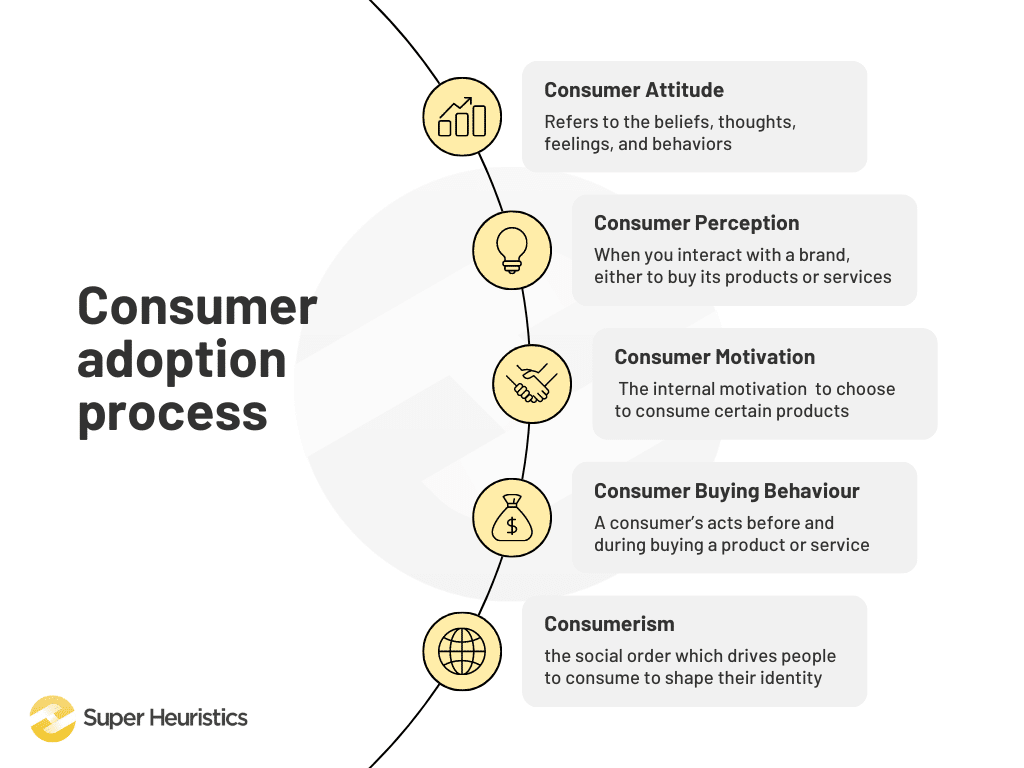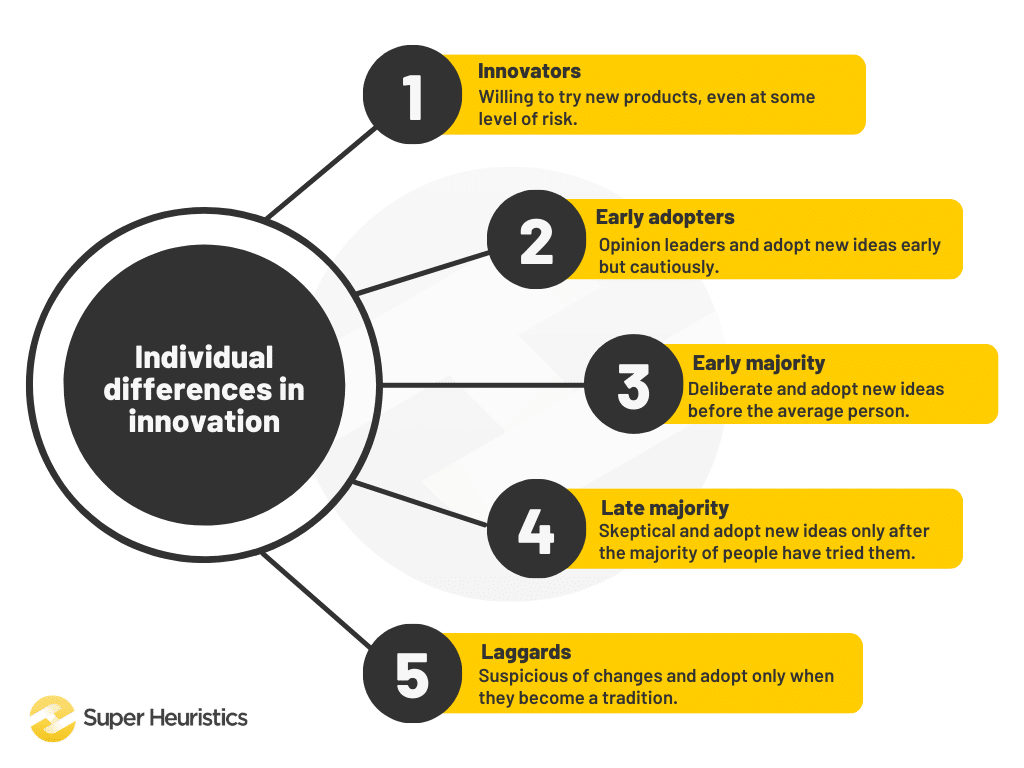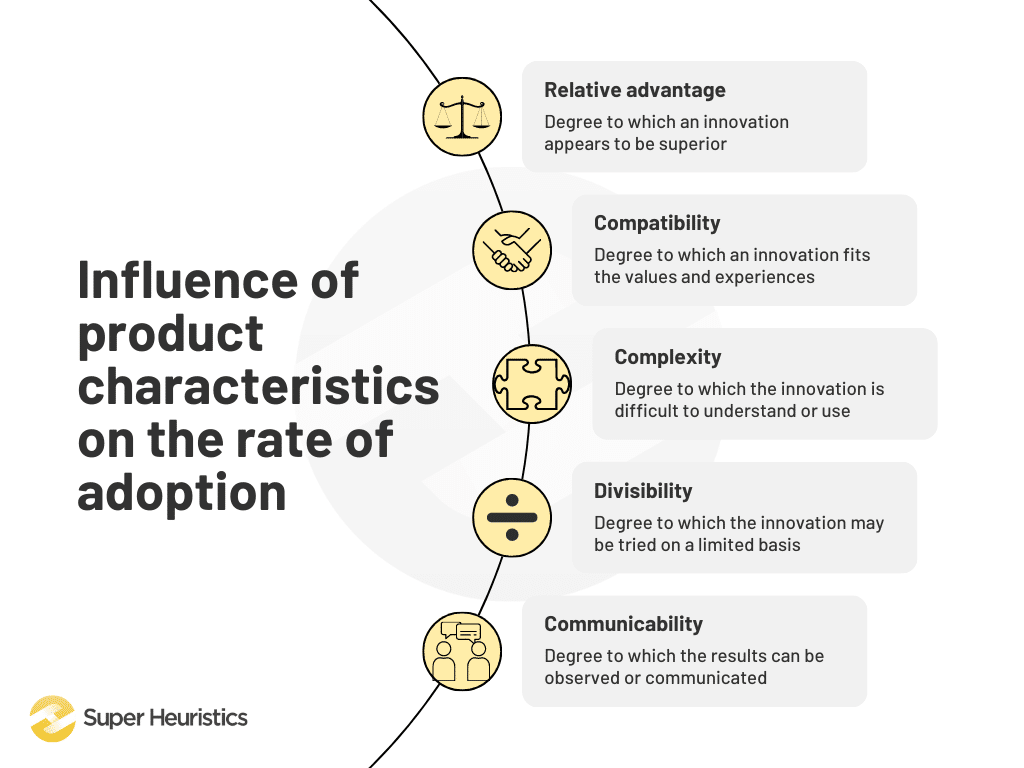There have obviously been countless times in every consumer’s life when they had to try a new product. The buyer decision process for new products varies vastly from the one for products the consumer has consumed before (refer to Chapter 8).
Let us tweak our instant noodles example to understand this process better. Let us imagine the first time you ever had to buy instant noodles was when you moved to campus. This makes instant noodles a new product for you.
You hear a lot of people talking about instant noodles when they plan to hang out at night to complete projects and assignments. Hmm… Instant noodles seem interesting.
After much thought, you finally decide to ask your friends about instant noodles. They tell you that you are missing out on the point of living on campus if you’ve never made instant noodles in an electric kettle till now.
They seem to make a good case. So you put on your thinking hat and remember all the times you’ve felt hungry at night. You’ll just have to buy the product and see for yourself.
A few days later, you go to the nearest supermarket and get two packets of instant noodles. Thankfully, you already own an electric kettle. Somehow, you manage to make your first instant noodles. You really like it!
You decide that the portion and taste are good for the price. The directions for use are also fairly simple. You are now right on track to becoming a regular consumer of instant noodles!
In this example, you have used the adoption process in consumer behavior. In this chapter, we will try to understand how this process works.
Understanding what a new product is
According to Philip Kotler, a new product is a good, service, or idea that is perceived by some potential customers as new.
So, it does not mean that a company has to take out a new product for it to be considered a new product by consumers. In this case, a new product is something that the consumer has never tried before.
For example, instant noodles are not a new product for the company that manufactures them. They are only a new product for you as a consumer because you have never had them before.
It might also be possible that a company’s new product might not be considered a new product by consumers. While the same instant noodles company may start selling tomato ketchup, it may not be a new product to you.
Understanding the consumer adoption process
The buyer decision process for new products has a specific name. It is known as the adoption process.
Philip Kotler defines the adoption process as the mental process an individual goes through from first learning about an innovation to final regular use.
There are five steps in the consumer adoption process. Let us study each of them in detail.

1. Awareness
Awareness is when the consumer becomes aware of the new product but lacks information.
This is right after the consumer has watched advertisements, publicity, etc., about the product or service being offered by the marketer. At this stage, the aim of the marketer should be to make the potential consumer aware of the existence of the product. This can be successfully done by putting up posters in a supermarket where the target market usually shops or through social media ads if you use the online channel for transacting.
2. Interest
After becoming aware of the product, it is likely that the consumer will become interested in it. Interest is when the consumer seeks information about the new product.
The marketer should ensure that information about the product or service is readily available to the potential consumer. Information can include the price of the product, where to find it, its uses, etc. For example, this information can be published on the website and the packaging itself.
3. Evaluation
After gaining sufficient information, the consumer then evaluates the product to find out whether trying the product makes sense. In other words, the consumer weighs the pros and cons of trying the product.
Marketers should ensure that the advertisements show clearly how the product can satisfy consumers’ needs. Even more importantly, the advertisements should clarify which needs the product satisfies.
For example, Coca-Cola’s ads usually portray that its drinks fulfill the needs of love and belongingness, whereas Tesla’s ads portray that its cars fulfill the need of self-actualization. (Data Drive Investor)
4. Trial
This is the stage when the consumer finally tries the new product to improve their estimate of value. They have already attached a preliminary value to the product during the evaluation stage.
Companies need to ensure that the products they are marketing actually add value to the consumers’ lives. One way to make consumers realize how much value the product has is to add nutritional value to the packaging of edible products. Another way is to use clever marketing strategies to make the consumer believe that the product can fulfill basic needs such as belongingness, hunger, etc.
For example, Coca-Cola’s ad (as shown below) claims that its drinks can give you a sense of love and belonging.

5. Adoption
By now, the consumer has given the final verdict that the product is, in fact, useful and adds value to their life. Adoption is when the consumer decides to make full and regular use of the product.
The product needs to be readily available to the consumer for repeat purchase. The company may also roll out offers for loyal consumers, festive deals, etc., to encourage consumers to adopt the product.
For example, Amazon has an annual ‘Great Indian Sale’ in addition to various smaller online sales like ‘End of Year Sale,’ ‘Great Republic Day Sale,’ etc. in India.
You may revisit the example we took at the beginning of the chapter to understand how the buyer decision process for new products is used by consumers in real life.
Understanding individual differences in innovation
Let us imagine that there are five people in your friend group. Consider that all five of you have different levels of curiosity for the same product. You all have a different version of the buyer decision process for new products.
For example, your favorite brand just launched a new flavor of instant noodles. All five of you found out about this new flavor at the same time. But all five of you tried the new instant noodles at different times.
Let us see how these five people can be classified as consumers.

1. Innovators
Let us say that your first friend went out and tried this new flavor of instant noodles as soon as they found out about it. They can be classified as an innovator.
Innovators are consumers who are willing to try new products, even at some risk. So, even if your first friend has a low spice tolerance, they will be the first one to try the new spicy flavor of instant noodles.
2. Early adopters
Your second friend thinks about their spice tolerance and carefully considers the heat level of the new instant noodles. After much thought, they decided to try the instant noodles earlier than the rest of their friends.
This friend can be classified as an early adopter. Early adopters are opinion leaders and adopt new ideas early but cautiously. On the other hand, an innovator tries a new product solely because it is new in the market, without being cautious like the early adopter.
3. Early majority
The third friend in your group takes more time than the second to really think about whether the new instant noodles will be worth trying. However, they still try the instant noodles fairly early.
The third friend can be called a member of the early majority. The early majority are deliberate and adopt new ideas before the average person, but later than or along with the early adopters.
4. Late majority
Let us consider you as the fourth friend. You are much more skeptical about the new instant noodles. You have smartly waited till the majority of your friends have tried the instant noodles and given their reviews about them.
You are part of the late majority. The late majority are skeptical and adopt new ideas only after the majority of people have tried them.
5. Laggards
The fifth friend in your group is someone who we can consider conservative. They are not fond of change and really like to be in their comfort zone. The first time they will try the new instant noodles will be when they have already become a tradition.
This last friend is a laggard. Laggards are suspicious of changes and adopt new ideas only when they become a tradition.
Understanding the influence of product characteristics on the rate of adoption
A product’s inherent characteristics also have a say in how quickly it is adopted by consumers in the target market. There are five product characteristics that a company can pay attention to for influencing consumer behavior in adopting new products.

1. Relative advantage
Relative advantage is the degree to which an innovation appears to be superior to existing products. For example, if the brand of instant noodles can somehow prove that the new flavor is gourmet, the flavor will undoubtedly do well in the market.
2. Compatibility
It is the degree to which an innovation fits the values and experiences of potential consumers. For example, if the new flavor of instant noodles contains beef or pork, it will rarely sell in the Indian market. The brand needs to keep in mind the values of the Indian market and create a product that aligns with these values.
3. Complexity
This is the degree to which the innovation is difficult to understand or use. For example, instant noodles are normally very easy to prepare, which adds to their appeal. But if the new flavor of instant noodles has more difficult directions for use than the traditional instant noodles, it will not do well in the market.
4. Divisibility
This is the degree to which the innovation may be tried on a limited basis. For example, if everything about the new flavor of instant noodles is attractive, but the price is too high, consumers will avoid buying them.
5. Communicability
It is the degree to which the results of using the innovation can be observed or communicated to others. For example, the new flavor of instant noodles must have an easy-to-pronounce name. Its qualities should be easily describable.
Conclusion and key takeaways
In this chapter, we have learned about the buyer decision process for new products. To recall, here are some key takeaways from the chapter:
- According to Philip Kotler, a new product is a good, service, or idea that is perceived by some potential customers as new.
- The buyer decision process for new products is called the adoption process. Philip Kotler defines the adoption process as the mental process an individual goes through from first learning about an innovation to final regular use.
- The five steps in the consumer adoption process are awareness, interest, evaluation, trial, and adoption.
- Individual differences in innovation classify consumers into five types - innovators, early adopters, early majority, late majority, and laggards.
- Product characteristics that have an influence on the rate of adoption are relative advantage, compatibility, complexity, divisibility, and communicability.
In the next chapter, we will study consumer behavior across international borders.

